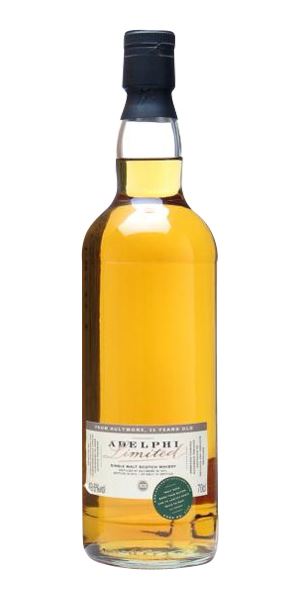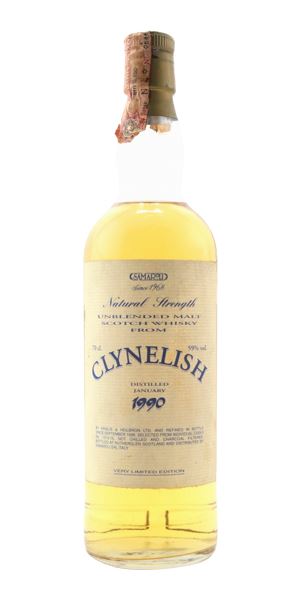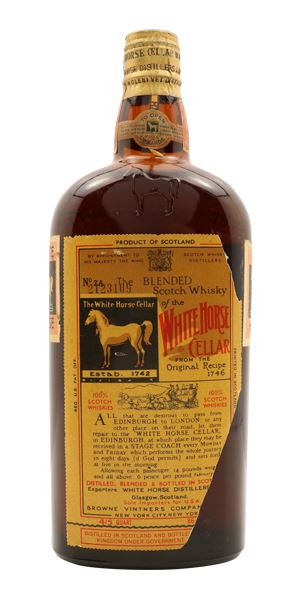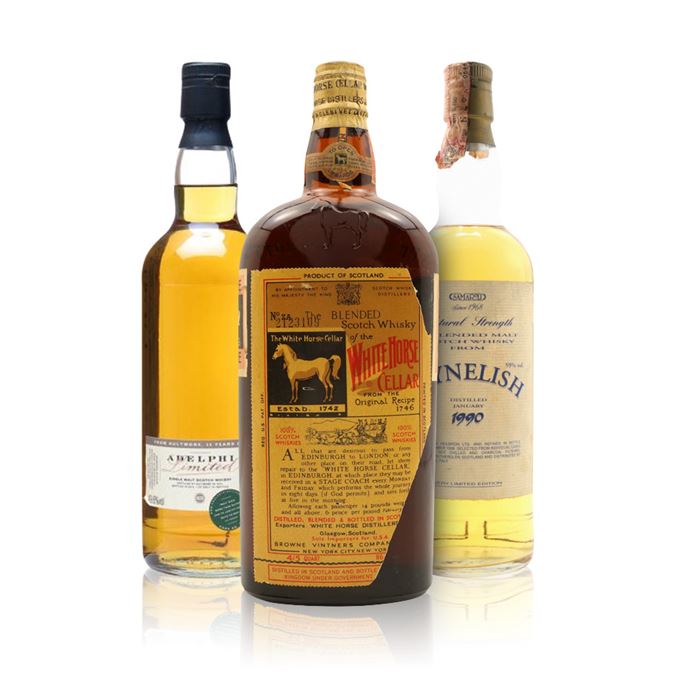-

- Price band
-
£ £ £ £ £
- ABV
- 49.6%
- Production type
- Single malt whisky
- Region
- Speyside
- Flavour camp
- Rich & Round
- Nose
Juicy malt, polished cereals and some warming medicinal balms at first. Aromas of sun tan lotion, cooking oil, hand lotion and herbal ointments all come through. It’s an old Speyside that nods more towards the classical impression of the Highlands. Lots of chalk, fabric, rubbed lemon skins and barley water. There’s some notes of canvas and hessian after a while as well.
- Palate
Superb arrival in the mouth. Waxy, punchy, rather rich and biscuity, with lots of big malty and cereal notes. Some honey in porridge and more chalky and toasty elements. Straightforward, but pretty excellent.
- Finish
Good length. Rather warming and on green tea, yellow chartreuse, camphor and dusty malt bids.
- Conclusion
Excellent aged Aultmore. Lots of muscle and still fighting fit at 35 (there’s hope for me yet!), without a hint of tiredness anywhere.
- Right place, right time
Coopering some hogsheads from the Tree Of Life.

- Price band
-
£ £ £ £ £
- ABV
- 59%
- Production type
- Single malt whisky
- Region
- Highland
- Flavour camp
- Fruity & Spicy
- Nose
Extremely fresh and prickly. Plentiful freshly-laundered fabrics and linens. Cornflour, pear eau de vie, farmhouse cider, hay lofts, crushed oatcakes and a glimmer of the Clynelish waxiness. It remains on the lighter side, but with a rather ‘in yer face’ edge of alcohol. With water there’s a curious initial note of quinine and vapour rub. Gets rather medicinal in a way that early ’90s Clynelish can often do, I find. Some lemon juice mixed with brine and the scent of geraniums in a greenhouse.
- Palate
Still extremely pure and uncompromising. There’s a kind of muddy waxiness up front, along with salted almonds, cut grass, parsley, hessian and chalk. Gets increasingly mineral with jagged pebbles, struck flints and crushed sea shells. Potent stuff! Develops towards things like hot putty, clay, anthracite and hints of floor cleaner. There’s a coastal edge and a waxy aspect as you’d expect, but they’re really jumbled up in there with all these grasses, minerals and pepperiness. With water: still tough. Lots of pebbles, clay, ointments, chalk and crushed aspirin. Notes of mild antiseptic mixed with cider and mustard powder. Really quite ‘out there’.
- Finish
Long, extremely peppery, dry earth, background waxiness, watercress and some bitter herbs.
- Conclusion
Mr Samaroli was a firm believer in bottle ageing, to the point that he recommended it on the back of his bottles. He said that his early bottlings were never as good at the time as they were in later years. With that in mind it’s perhaps no surprise that he’d have chosen to bottle such an uncompromising and rather brutal take on Clynelish. Perhaps a bottle that’s worth tucking away for another 30 years (if you can afford to avoid the temptations of the secondary market) and seeing how it develops. It’s certainly still a serious and extreme example totally dominated by the distillate. I love it, but it’s a very ideological and rather intellectual style of whisky; not the most easy or obvious style.
- Right place, right time
One more century in the glass, and it’s time for a dram.
(Image courtesy whiskyauctioneer.com)

- Price band
-
£ £ £ £ £
- ABV
- 43%
- Production type
- Blended Scotch whisky
- Region
- n/a
- Flavour camp
- Smoky & Peaty
- Nose
The kind of mentholated, rooty and extremely herbal peat profile, which is typical in these old White Horses, is here in spades. You really get the impression that the peat has broken down and deconstructed itself to a high degree. Out of that process has come lots of medicinal balms, camphor, vapour rubs, tea tree oil, furniture polish and paraffin. It’s also extremely cough medicine-like, with notes of cherry throat sweets and old tool boxes. There’s some rather metallic and sooty notes which suggest ‘old bottle effect’, but they’re nicely balanced within the whole profile and not excessive.
- Palate
A tad soft as expected, but the peat here really surges with salted liquorice, dried herbs, herbal extracts, tiger balm, tar extract and gentian. Also some black olives, brine, strong black tea, mushroom powder and some roasted root vegetables. Notes of bouillon stock, steel wool, mechanical oils and some unsweetened ginger liqueur. The alcohol feels a tad lowered, but the potency of the peat and overall impression of the structure and muscle of the various components is beautifully impressive.
- Finish
Medium, but the peat itself really lingers with earthy, peppery intensity. There’s a glimmer of green apple – perhaps from the grain – and some starchy, mushroom-like umami.
- Conclusion
It’s so easy to see why people fall in love with these old White Horses. As with the best historic blends, they really offer a broad window into the styles of malt whisky of that era, particularly in the character of peat in Scotch malt whisky at the time. It’s also fascinating to see how that peat character has broken down and become more intricate and complex, while at the same time really dominating the grain component. It’s a process you miss in later examples of White Horse from the ’60s onwards, when they upped the grain quota.
- Right place, right time
Cutting peat on the Machrie in 1932.
(Image courtesy scotchwhiskyauctions.com)

A 1940s White Horse is the star attraction of Angus MacRaild’s latest batch of rare whisky reviews, flagged either side by a youthful 1990s Clynelish and 1974 vintage Aultmore.
The 35-year-old Aultmore, bottled by Adelphi, was a release limited to just 101 bottles making it difficult to come by. It’s a shame, says MacRaild, who finds it to be an ‘excellent’, full-bodied and robust example of well-aged Aultmore that has retained ‘remarkable’ freshness and poise.
Speaking of freshness, the next whisky takes the concept to the extreme. A youthful eight-year-old Clynelish, distilled in 1990 and bottled by Italian company Samaroli, is a vatting of two single casks, #1015 and #1016. MacRaild finds it extremely pure and almost ‘ideologically’ distillate-driven. Verging on austere at times, this is the kind of dram you would usually only pour one of in a single evening. That’s no bad thing, considering a newly-opened bottle would benefit from more than a year of breathing.
Wrapping up the session is a very old White Horse blended whisky bottled for the United States in the late 1940s. Unlike many whiskies sealed with a spring cap, MacRaild finds that this one has survived very well without too much taint, oxidisation or ‘old bottle effect’. Instead, it displays a complex peat profile, which illuminates the broad character of peated Scottish malts from that era.

